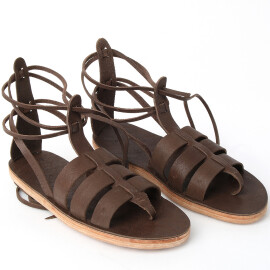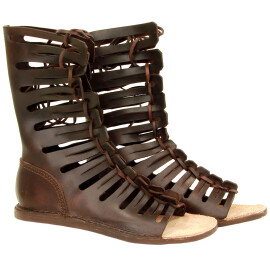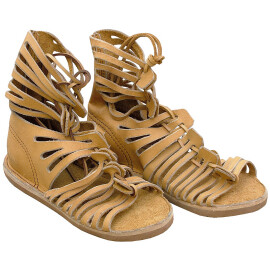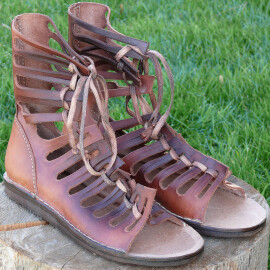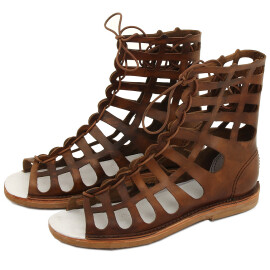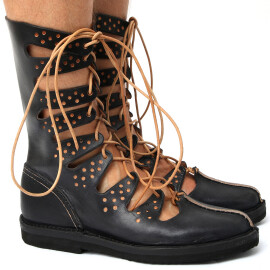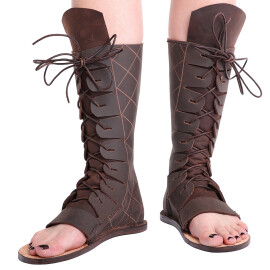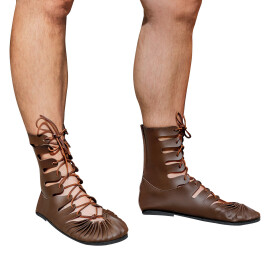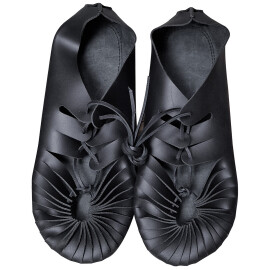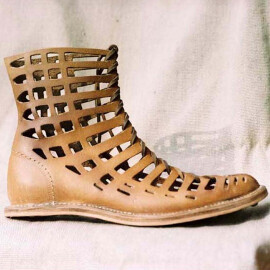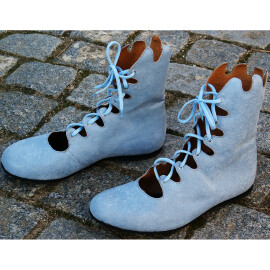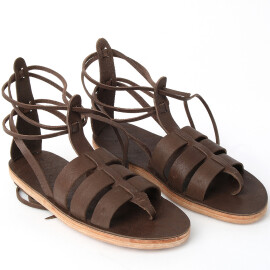Caligae
Caligae were heavy-soled hobnailed military boots known for being issued to Roman legionary soldiers and auxiliaries throughout the Roman Republic and Empire. Caligae today can resemble sandals but the Latin term referred only to marching boots. Sandals proper were not worn outside by the Romans, rather they were regarded as indoor footwear.
Narrow your Results
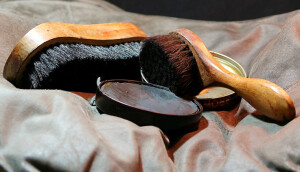
Caligae
The open design of caligae allowed for the free passage of air to the feet and, unlike modern military boots, was specifically designed so as to reduce the likelihood of blisters forming during forced marches, as well as other disabling foot conditions like tinea or trench foot. Socks were not normally worn with caligae, although in colder climates such as Britain, woolen socks were used.
Caligae were constructed from three leather layers: an outsole, the middle openwork layer which formed the boot's upper, and an insole. They were laced up the center of the foot and onto the top of the ankle. Additionally iron hobnails (calvi) were hammered into the soles to provide the caligae with reinforcement and traction, and were also an effective weapon against a fallen enemy.
Various other types of leather footwear were worn within the Roman empire. The carbatinae was a sandal made from one piece of leather with a soft sole and openwork upper fastened by a lace. Women wore sandals similar to those of men, but they were of softer, finer leather. Winter shoes were usually cork-soled.

